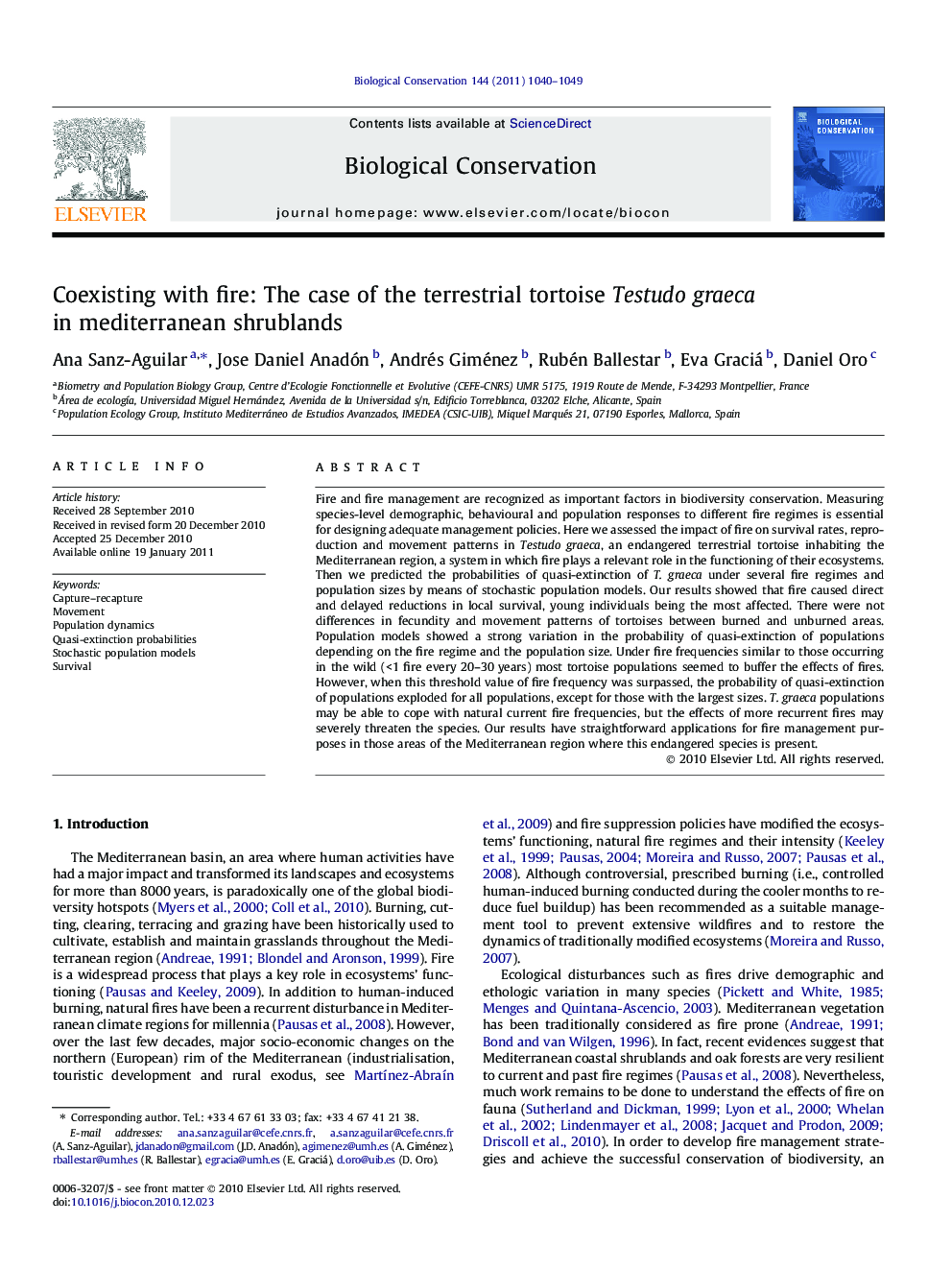| Article ID | Journal | Published Year | Pages | File Type |
|---|---|---|---|---|
| 4385624 | Biological Conservation | 2011 | 10 Pages |
Fire and fire management are recognized as important factors in biodiversity conservation. Measuring species-level demographic, behavioural and population responses to different fire regimes is essential for designing adequate management policies. Here we assessed the impact of fire on survival rates, reproduction and movement patterns in Testudo graeca, an endangered terrestrial tortoise inhabiting the Mediterranean region, a system in which fire plays a relevant role in the functioning of their ecosystems. Then we predicted the probabilities of quasi-extinction of T. graeca under several fire regimes and population sizes by means of stochastic population models. Our results showed that fire caused direct and delayed reductions in local survival, young individuals being the most affected. There were not differences in fecundity and movement patterns of tortoises between burned and unburned areas. Population models showed a strong variation in the probability of quasi-extinction of populations depending on the fire regime and the population size. Under fire frequencies similar to those occurring in the wild (<1 fire every 20–30 years) most tortoise populations seemed to buffer the effects of fires. However, when this threshold value of fire frequency was surpassed, the probability of quasi-extinction of populations exploded for all populations, except for those with the largest sizes. T. graeca populations may be able to cope with natural current fire frequencies, but the effects of more recurrent fires may severely threaten the species. Our results have straightforward applications for fire management purposes in those areas of the Mediterranean region where this endangered species is present.
